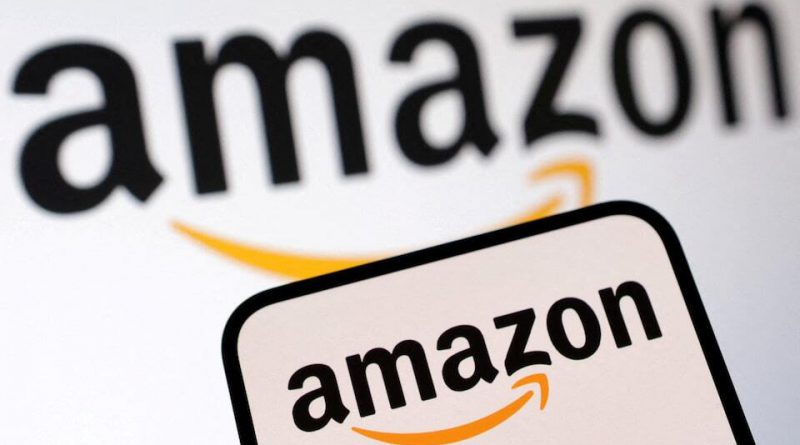India’s Small Sellers Power Amazon’s $20 Billion Export Boom
From small-town artisans to global entrepreneurs, India’s digital sellers are transforming e-commerce exports — propelling Amazon toward an $80 billion goal by 2030 despite global trade headwinds.
Amazon has announced a major milestone in India’s digital trade journey as Indian sellers have collectively surpassed $20 billion in e-commerce exports.
This remarkable achievement highlights the growing strength of the country’s online export ecosystem.
Despite new U.S. tariffs on certain Indian goods, the company remains optimistic about long-term growth and has set an even higher target of reaching $80 billion in exports by 2030.
This milestone underlines India’s transformation into a global export hub powered by small businesses, artisans, and micro-entrepreneurs.
Since the launch of Amazon’s Global Selling program in 2015, thousands of local sellers have gained access to international markets, building global customer bases and transforming their livelihoods through digital platforms.
The program now spans 28 states and seven union territories, connecting more than 200,000 Indian sellers with buyers across 18 countries including the United States, the United Kingdom, Germany, Canada, and the United Arab Emirates.
The achievement reflects not only Amazon’s global reach but also India’s evolving digital economy. As the world’s fastest-growing e-commerce market, India is witnessing a surge in small-town participation in exports.
Sellers from cities like Panipat, Bhadohi, Karur, and Erode have become central to this transformation.
Known for their traditional craftsmanship in textiles, home décor, and furniture, these towns are now leveraging technology and logistics support to serve international consumers directly.
In 2024 alone, Panipat and Karur together shipped goods worth nearly $160 million, showing how smaller manufacturing hubs are reshaping India’s trade story.
According to Srinidhi Kalvapudi, head of Amazon Global Selling India, this milestone is just the beginning. He stated that the company’s focus remains on long-term growth rather than short-term challenges like tariffs or policy shifts.
Amazon’s Global Selling program has seen significant expansion, helping Indian sellers reach millions of customers across continents.
The platform allows micro, small, and medium enterprises to list their products globally while Amazon provides assistance in logistics, warehousing, payments, and customer service.
This ecosystem has reduced traditional barriers to trade and empowered even first-time exporters to compete internationally.
Categories such as health and beauty products, home décor, apparel, and toys have emerged as top-performing segments, growing at more than 35% annually.
This reflects global consumers’ increasing preference for Indian craftsmanship, sustainable materials, and innovative design.
Products ranging from handmade carpets in Bhadohi to eco-friendly kitchenware in Tamil Nadu are now household favorites across the U.S. and Europe.
Amazon’s export success also aligns with India’s broader trade ambitions. The country’s 2023 trade policy and the Reserve Bank of India’s simplified e-commerce export rules have created a more favorable environment for cross-border digital trade.
These reforms have streamlined documentation, reduced compliance burdens, and simplified foreign exchange regulations, allowing small sellers to export with ease.
Kalvapudi emphasized that government support and digital transformation have played key roles in empowering local entrepreneurs. He noted that exports are no longer limited to metro cities, as small towns have become the backbone of India’s export story.
While U.S. tariffs introduced in August 2025 temporarily affected shipments of textiles, shrimp, gems, and jewelry, Amazon’s diversified export base has helped cushion the impact.
The company’s global network continues to provide stability, ensuring that Indian sellers have multiple markets to explore.
Amazon has also invested heavily in training and development programs to equip Indian sellers with skills in product optimization, packaging, and global logistics.
These initiatives have strengthened the competitiveness of Indian MSMEs, allowing them to deliver high-quality products that meet international standards.
Looking ahead, Amazon aims to quadruple exports from India over the next five years. Its vision is supported by the growing number of local entrepreneurs embracing e-commerce as a tool for global expansion.
The next phase of growth is expected to come from tier-2 and tier-3 cities, where internet access, improved infrastructure, and digital literacy are unlocking new opportunities.
With over 200,000 exporters already contributing, India’s digital export economy is more inclusive than ever before. The combination of government reforms, global market access, and digital innovation positions the country as a future leader in cross-border trade.
Amazon’s achievement of $20 billion in exports ahead of schedule stands as a symbol of India’s resilience, creativity, and entrepreneurial spirit.
It represents a powerful narrative of how small sellers, equipped with technology and determination, can redefine global commerce.
As India marches toward its $80 billion goal by 2030, this success story showcases how digital platforms can empower local talent, strengthen economies, and bring the spirit of “Made in India” to households around the world.


